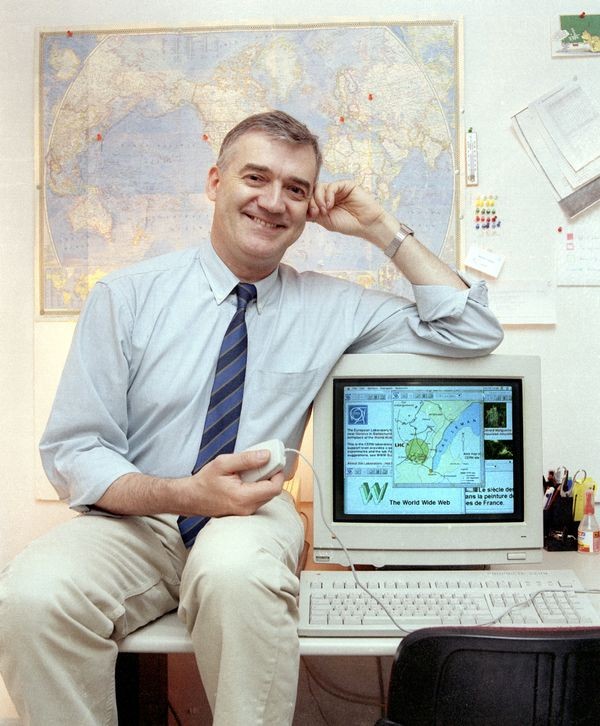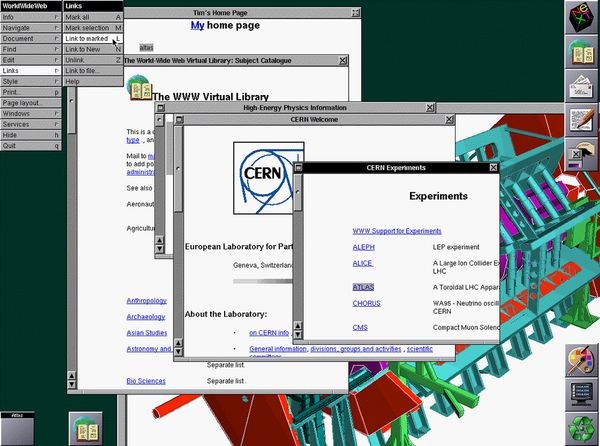Inventing the Web
Tim Berners-Lee
The son of computer scientists, Berners-Lee studied physics at Oxford, but then switched to computing. The multitude of incompatible documents at CERN led him to try to unify them using hypertext.
Inventing the Web
At the world’s biggest physics laboratory, CERN in Switzerland, English programmer and physicist Tim Berners-Lee submitted two proposals for what became the Web. Neither was approved. He proceeded anyway.
With only unofficial support from his boss and interested coworkers, he created “WorldWideWeb” on an advanced NeXT computer in 1990. It featured a server, HTML, URLs, and the first browser.
That browser also functioned as an editor—like a word processor connected to the Internet – which reflected his original vision that the Web also incorporate authoring and personal organization tools.
Birth of the World Wide Web
Visionaries dreamed of computerizing and linking the world’s knowledge. But the dream was out of reach until Tim Berners-Lee created the scheme that made it possible. This is the story of the World Wide Web, from a concept once described as “vague but exciting” to a tool used by more than two billion people!
View Artifact DetailManual for "Enquire" by Tim Berners-Lee
In 1980 a young Berners-Lee at CERN created “Enquire,” a hypertext system used for project management. He claimed he wasn’t aware of earlier hypertext work, so it may have been an independent reinvention.
View Artifact DetailRobert Cailliau
Belgian-born Cailliau dropped his own networked hypertext ideas to join Berners-Lee as collaborator and evangelist.
View Artifact DetailNeXT Computer
The expensive but cutting-edge NeXT computer-- whose OS evolved into Mac OS X-- was famous for rapid prototyping features. These let Tim Berners-Lee create the Web in just three months, but restricted the first browser-editor to these rare machines.
View Artifact DetailJean-François Groff
Frenchman Groff programmed important parts of the Web’s early code.
View Artifact DetailThe Web + Internet = Success
By 1989, the Internet was winning over major competitors like OSI, becoming the de facto networking standard.
Within five years, the World Wide Web would similarly prevail over a dozen rival information systems—partly by virtue of its strengths, partly by incorporating rivals.
The two together, the Web running over the Internet, swept the world and changed all of our lives.
WorldWideWeb browser-editor
The first browser developed in 1990 was also an editor for creating a personal “web” of linked documents. Selecting text and clicking “Link to Marked” created a linked page. HTML and URLs were there, but hidden.
View Artifact Detail





